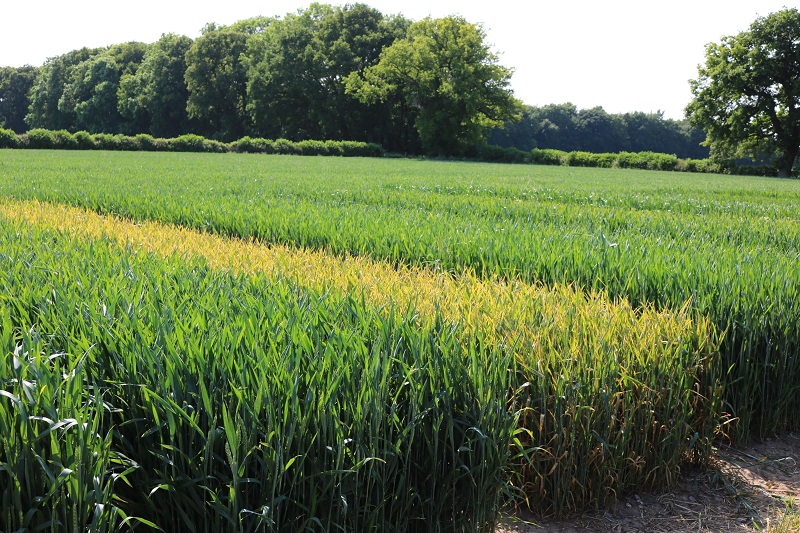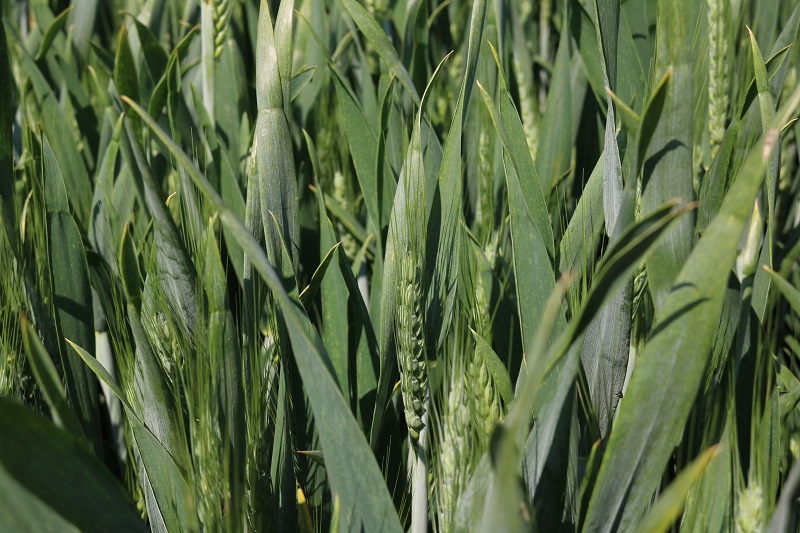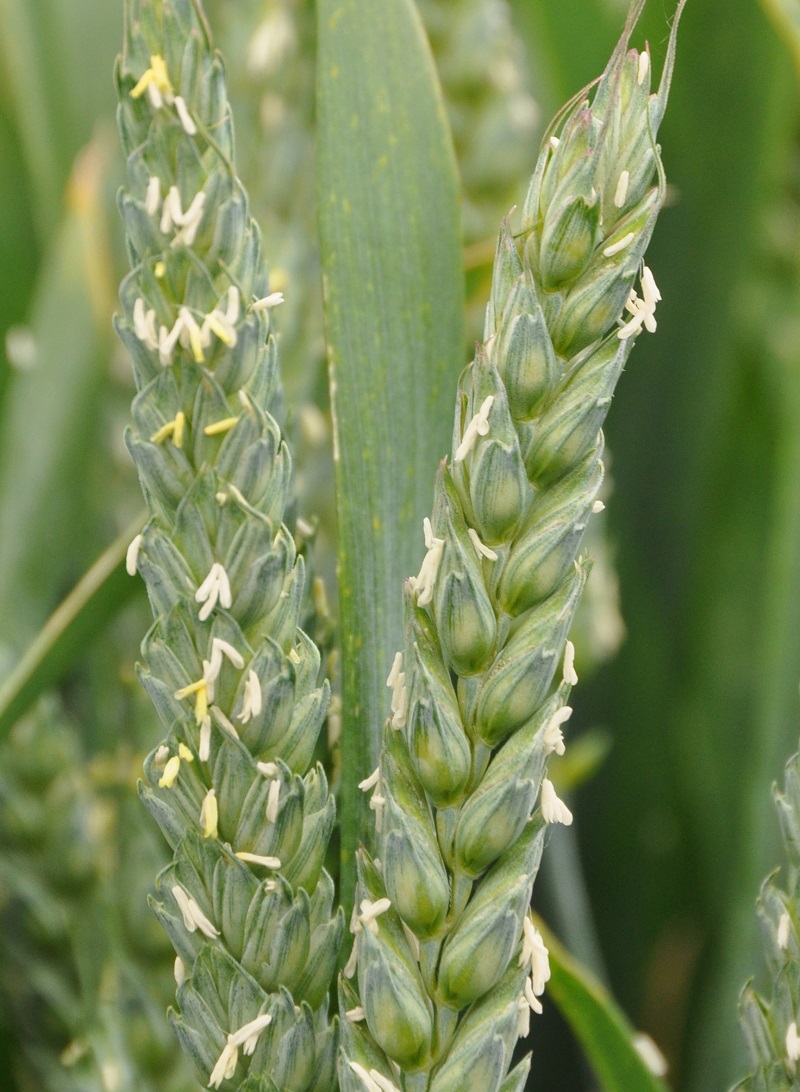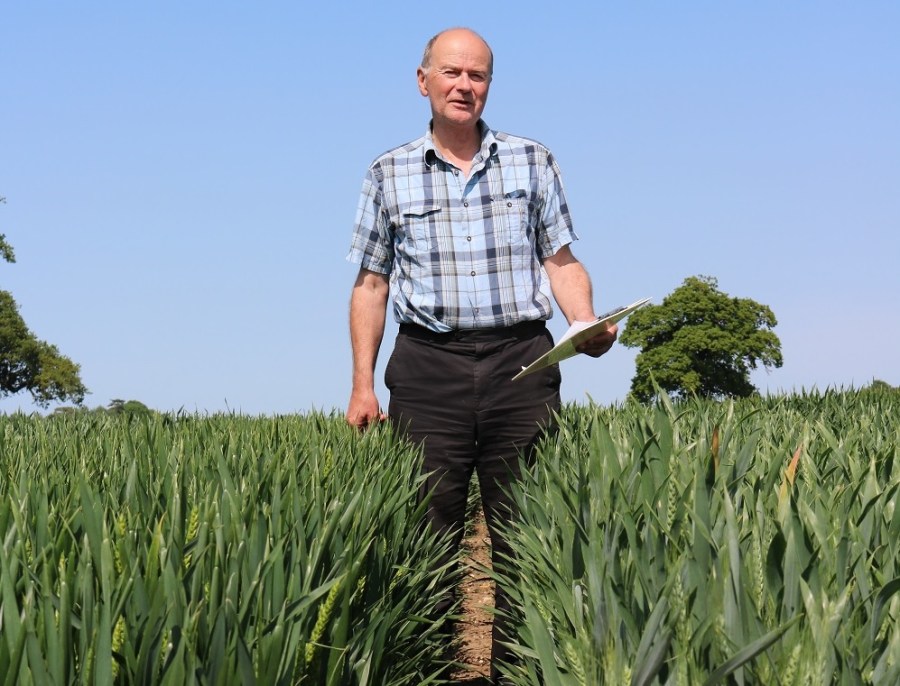
With some strong options on the Recommended List, choosing which winter wheats deserve to put their roots down in your soils this autumn will be tough. CPM visits a trials site in Oxon to pull out some promising choices.
Anything below 5.4 for Septoria tritici I’d discard.
By Tom Allen-Stevens
It was 1972 that the wheat variety Joss Cambier succumbed to yellow rust. Model Farm, east of Oxford, was growing it at the time, and David Parker reckons he was one of the first in the UK to spot the yellow pustules as they appeared on the variety.
“It caused havoc, as there were no tools to deal with the disease,” he recalls. “Ever since then we’ve had wheat trials on the farm.” Run initially by RHM, these days the trials are funded by Syngenta. There are also National List trials, and David Parker has always taken a keen interest in the varieties as they’ve progressed.
Over the years, he’s built up quite a bit of knowledge on how they perform. It’s helped him choose wheats across the 265ha of combinable crops he grows (Skyfall, RGT Illustrious, Cordiale and RGT Knightsbridge are currently in the ground). But he also conducts plot tours, both on his own farm and for nearby on-farm events.
So if he was to put together a portfolio of six varieties from the current AHDB Cereals and Oilseeds Recommended
List, which would he include? “The first thing I’d do is look to discount anything with a score for Septoria tritici below 6,” he states.
That needs to be done with a certain amount of care, however. “A rating of 5.5 gets the same score as 6.4, but there’s a world of difference between the two.” So he recommends downloading the spreadsheet of the RL from the AHDB website so you can view the figures to one decimal place.
“Anything below 5.4 for Septoria tritici I’d discard, and you’d want no other disease rating to be below 3.5,” he continues. “Standing power is the next one that concerns me – we may be applying up to 300kgN/ha on some of these wheats. If they go flat, you’ll have to cancel your holiday.”
So he’s looking for an untreated resistance to lodging score of more than 6.5 and a treated score greater than 7.5.

Reflection would have been a firm favourite, but the untreated trial plot stands out a mile due to the yellow rust.
“But I’d like at least half of my varieties to have a treated score above 8,” he adds.
“Sprouting can be a concern, especially if there are quality varieties in your portfolio. You don’t want to have more than one on the farm that’s susceptible – that’s the one you prioritise at harvest.”
With the loss of chlorpyrifos, Orange Wheat Blossom Midge resistance is preferable, he notes. “The trouble is, the only resistant ones are all descended from Robigus, until Skyfall, which appears to be reliable, consistent and stable.”
So far, David Parker hasn’t made a mention of yield – is that not important? “The yield difference is relatively narrow, compared with disease. We can’t afford to apply vast amounts of chemistry and equally we can’t afford for the agronomic factors to fail us,” he states.
That whittles the selection down to around a dozen varieties. “Scout I’d take out because it doesn’t yield enough. Relay is reliable, tolerant to abuse and tillers well, but I wonder if it’s now outclassed.
“With RGT Conversion, it’s the resistance to sprouting that concerns me, and with Revelation it’s the same, although the latter does have very impressive resistance scores.”
Despite its borderline septoria score, Reflection would have been a firm favourite. “But the untreated trial plot here stands out a mile due to the yellow rust – you have to question what its current score of 6 will fall to.”
The other concern he has for the variety is its consistency. “On paper, the yields over the years are all over the place – that’s something to keep an eye on.”
There are three Group 1 varieties that catch his eye. “When it comes to quality varieties, markets, local requirements and premium obviously all have a bearing, and that will be down to the individual situation,” he cautions.
“However, I don’t yet know enough about RGT Illustrious and I’m nervous about its protein content. Everything else about it looks promising, and they say that Illustrious at 12% protein is worth other Group 1s at 13%. I’d like to see the market commit more to this variety first.
“As for KWS Trinity, the septoria score is borderline and again protein is low. There’s a really healthy Hagberg, and if that’s something you struggle with, maybe Trinity is the Group 1 to go for. But otherwise, I don’t see the point,” he says.
And that brings David Parker to his final selection.
Skyfall
“This is a banker variety. All its disease scores are 6 or above, apart from Septoria nodorum. Other than Grafton, no

A “banker” variety, the only slight fly in the ointment with Skyfall is sprouting, so it needs to be given priority at harvest.
other variety on the RL is stiffer, untreated. It ripens reasonably early – about the same as Solstice – and it has OWBM resistance. I’ve yet to find a serious fault with Skyfall, and it yields particularly well in the West,” says David Parker.
One slight fly in the ointment is sprouting. “You need to be aware of this and give the variety priority at harvest. Also don’t grow any other wheats that are susceptible. But it threshes well, despite its awns.”
Growers may struggle to get the full milling spec, especially if they push the variety for yield, he notes. “But even as a feed wheat it’ll put a nice big heap in the barn, and I wouldn’t be surprised if milling premiums take a bit of a tumble after harvest this year.”
KWS Lili

Lili has the yield of a feed variety with the potential for export, it stands well and has a septoria score of 5.9.
This is the Group 2 that just finds favour over KWS Siskin. “I’d need to know more about Siskin’s standing power and sprouting resistance before committing to it, but it could well be one for the future,” says David Parker.
“Lili has the yield of a feed variety with the potential for export or even a quality premium at home. I wouldn’t spend money on chasing that premium, but if you got it, it would be a nice bonus.
“Agronomically, it stands well and a septoria score of 5.9 is good enough. It’s a little late to harvest, although that’s not a concern for every grower.”
KWS Basset
This variety makes the shortlist largely on the strength of its OWBM resistance. “Since Reflection has been excluded, there are few midge-resistant varieties worth keeping. But Basset looks a promising variety. Its septoria score is borderline, but it has the yield with the prospect of a Group 3 premium.”
This premium shouldn’t be overstated, he cautions. “The markets for Group 3 wheats used to be huge and the UK had a good reputation overseas for soft, quality wheats. But the poor harvest of 2012 killed that market – now overseas millers go elsewhere to make up their grist and the demand for Group 3 wheats is tiny.”
Revelation
This is the variety to choose if you’re not growing Skyfall, reckons David Parker. “It’s a soft Group 4 wheat with all the right disease scores and it’s always one of the cleanest in trials. It yields well and could get you a distilling premium in the North.
“But its poor resistance to sprouting is a concern, so you’d have to prioritise this variety at harvest. What’s more, it doesn’t yield well in the West, so I’d choose Skyfall over Revelation, and definitely wouldn’t grow both.”
Graham
It’s Graham’s 6.6 for septoria resistance that puts it on David Parker’s shortlist. “That follows through with a very impressive yield. In the West, that’s a stunning 107%, so this is clearly a variety that thrives in damp conditions.
“Interestingly, its septoria resistance isn’t quite so impressive in France and Kent, and you wonder whether there’s a different population coming in. But that’s still a score of 6, which is acceptable. Standing power is slightly borderline compared with some other wheats, but a fusarium score of 7 is nice to see.”
Costello
This variety wasn’t on David Parker’s list to begin with. “It meets all the agronomic scores, but has a yield of 103, which is comparatively low for a Group 4 hard feed type.
“However, a specific weight above 80kg/hl makes this a very attractive variety. Another good sign is that 2012 was one of its best years. So with its disease scores, a resistance to lodging of 8.3 and its high specific weight, this is a variety to rely on in an otherwise disastrous year.”
Pipeline of potential
A number of RL candidates have caught David Parker’s eye. “Being ruthless, I’ve discarded all varieties with a septoria rating below 5.5. Of those that are left, there are some really promising wheats,” he says.
“KWS Zyatt looks almost too good to be true. There are strong disease scores and it yields like KWS Santiago. Lodging risk looks OK, it’s early to harvest, and it’s a possible Group 1 – I can’t see a fault.”
Another interesting development are the four candidate feed varieties from Elsoms Wheat, he says. “I’m delighted to see a new breeder make such a strong showing on the Candidate list. Bennington is a good all-round variety and Dunston has an impressive yield.”
Shabras from Syngenta is another he’d pick out for its yield and earliness to mature. “A septoria rating of 7 might get Marston on to next year’s RL by itself. There’s also RGT Knightsbridge which yields its socks off, but has rather a low specific weight. With its midge resistance and distilling potential, it’ll find favour in the North.”
Robust ratings keep wheat clean and green
With 228ha on Holbeach Marsh in the Wash, Dean Bowd, farms in a bit of a hotspot for Septoria tritici. That’s why he’s given the thumbs up to the new wheat variety Graham, which promises to give growers extra resistance in the fight against the disease.
Bowd Farming Company, near Spalding, has been growing 26ha of the new variety as a seed crop on the farm’s silt soil, prior to it being launched for this autumn. It forms part of his wider rotation of winter wheat, winter barley, sugar beet, peas, potatoes and daffodils.
Being near the Wash puts the farm in an area known for a high incidence of septoria, as well as yellow rust, he explains. But even with this season’s high disease pressures, the crop of Graham has remained clean and green, he says.
He puts this down to the variety’s strong disease scores – Graham has a Septoria tritici rating of 6.6, the highest among the feed wheats on the AHDB Cereals and Oilseeds Recommended List, and a yellow rust resistance rating of 8.
Based on how it’s looked so far, he’s already predicting it could smash his typical average winter wheat yield, and has plans to grow it as a commercial crop next year.
“It’s our first year with the new variety,” explains Dean Bowd. “The resistance to septoria is what attracted me. Because we’re near the Wash we’re in a hotspot – we get sea frets or mists that seem to start the disease, then it moves up the plant by rain splash.
“Also Graham’s high yellow rust resistance appealed to me, and the yield is there with it as well. Overall, it’s looked very clean – cleaner than you’d expect given the season. It seems to be a good all-rounder.”
While mildew isn’t a major problem on the farm, except in lusher field areas that receive overlapping nitrogen doses, he sees its mildew resistance of 7.6 as useful. Also of interest is its fusarium ear blight resistance of 7, as the farm can suffer badly from the disease in wet years, he says.
“It’s also a ground-covering type of wheat, which will be a bonus in drought years. By covering the ground it helps keep the moisture in.”
As for management, he says nothing unusual has had to be done with the crop, which was drilled on 28 Oct as a first wheat after peas.
A standard winter feed wheat nitrogen programme of 500kg/ha of a 34.5% N fertiliser has been used, he notes, with applications in early March, early April and early May, the first one also being applied with sulphur.
Similarly, key foliar fungicides have been based around a standard approach of Cherokee (chlorothalonil+ cyproconazole+ propiconazole) at T0 followed by Keystone (epoxiconazole+ isopyrazam) plus chlorothalonil. A practical benefit that he sees from Graham’s robust disease resistance is if fungicide spraying is delayed.
“We get a lot of breezes round here. If you can’t get on the field for 3 or 4 days to spray, resistance in the plant gives you a bigger window.
“Based on the way it’s looked, I’ll be growing Graham as a commercial crop next year. Of course, the final decision will be made once we see its yield, but I’d expect 12-13 t/ha. Normally our five-year average is 11.25 t/ha, excluding the exceptional season last year.”
Also planned for next year’s rotation is to grow the new hard feed winter wheat variety, Shabras, for seed.




